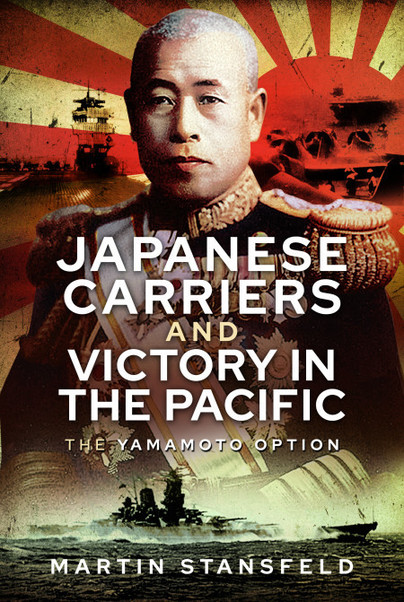80th Anniversary: Pearl Harbor
The Pearl Harbor surprise raid by Yamamoto’s Japanese aircraft carriers on the US Pacific Fleet occurred 80 years ago, December 7, 1941 at 8 am. It shook America out of Isolation into becoming a worldwide naval superpower, king of the waves if not quite lord of the earth.
Martin Stansfeld’s Japanese Carriers and Victory in the Pacific, the Yamamoto Option re-tells the drama from the point of view of insights into the planning and background of the notorious raid, like why and how Yamamoto did not invade Hawaii instead of just raiding its naval base, as the carrier fleet’s air group commander Minoru Genda had urged during the planning stage. Yamamoto in retrospect regretted this failure of nerve, musing to confidants how 40% of the senior brains of the US Navy could have fallen into the bag, saying how it only took four years to build a battleship but twenty to train a senior officer. So invasion planning resumed after the event and was only abandoned after the defeat of the Japanese carrier fleet at Midway.
He cites neglected sources to show how close things came to an invasion scenario that could have turned captive half a million Americans, hostages for an early East Asia settlement, and confinement of America more or less to the Pacific coast.
He notes that what could have saved Hawaii from invasion in the days after the raid was ironically the absence of all three American Pacific Fleet aircraft carriers from their base at Pearl Harbour. Could they be waiting in ambush? Here it was nerve gave way for Admiral Nagumo, who was Yamamoto’s carrier fleet commander. Mission accomplished – the battleships removed from the chessboard – why risk his precious carriers to a counter-attack (such was later to destroy four of their six at Midway) ? The command went out, the fleet slewed round into the sheltering northern mists and gales on a course back to the land of the rising sun. In that moment the outcome of the war was won. Without Hawaii, America could not have won for simple realities of the Earth’s geography is what the author surmises; there were no islands useful as jump off points between the West Coast and Hawaii unlike the stepladder of archipelagos between Hawaii and Japan.
The book posits that if Japan had succeeded in doubling its carrier fleet before December 7, 1941, a Hawaii invasion could have been a very low risk venture. But it did not because the battleship admirals won their day. Yamamoto nonetheless won his point, five of the eight battleships at Pearl got sunk by his carriers and days later his land based naval torpedo bombers sank Prince of Wales and Repulse off the coast of Malaya.

Japanese Carriers and Victory in the Pacific by Martin Stansfeld is available to order here.

